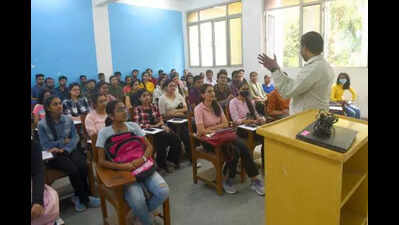New Delhi: The Directorate of Education has asked all schools, including govt, aided, private and those under local bodies like the Municipal Corporation of Delhi and New Delhi Municipal Council, to carry out a detailed screening of every student for 21 types of disabilities as defined under the Rights of Persons with Disabilities Act, 2016. Using the Prashast mobile app and checklist, teachers are directed to observe both overt and subtle signs of disabilities in students, among them poor handwriting, difficulty in making eye contact, lack of sense of direction or signs of being lost in an imaginary world. The primary objective is early identification of disability and provision of appropriate support and inclusive education.
Teachers will undergo orientation on how to use the app effectively and document all observations. Before any screening of a child, however, a no-objection certificate has to be obtained from the parents. Suspected disabilities identified during the screening will be referred for expert evaluation.

According to the DoE circular, teacher training on the Prashast app must be completed by April 30. The school-level screening of students must conclude by July 25 and final reports, including class-wise and consolidated data, must be submitted to district coordinators by July 31. Any negligence in this process, the circular warns, will be taken seriously and action may be taken against the school authorities.
This screening is an annual exercise conducted by DoE for early identification of disabilities among students and to develop and implement appropriate educational programme in line with the provisions of RPWD Act. Prashast will provide instructions, guidelines and items for the initial screening of 21 disabilities covered under the Act. Newly admitted students in classes I to XI as well those who were not included in the 2024-25 screening drive will also be covered.
Each student in a particular class will be closely observed by the class teacher in consultation with subject teachers. Those who exhibit ‘red flag' behaviours will be identified and considered for administering Part 1 of the Prashast checklist. The class teacher will maintain a list of all such suspect students.
The Prashast checklist is divided into two parts. Part 1 is designed for use by regular teachers for initial screening. It consists of objective-type items that teachers can mark based on their day-to-day observations of a student's behaviour and abilities.
Part 2 is intended for special educators, counsellors or school heads, and is used for a more detailed, second-level screening. This follow-up step is crucial in tentatively identifying specific disabilities based on the records collected in Part 1. Following the screening, students who possibly may be having disabilities will be referred to the district resource centre for further assessment and access to therapeutic services, as required.
"Early intervention can change a child's entire learning journey," said Sudha, vice-principal and psychology teacher at Bloom Public School, Vasant Kunj. "This isn't just a checklist — it's a detailed, collaborative process. Teachers are first oriented by special educators, then observe students closely for consistent behavioural patterns.
Sometimes, what seems like a difficulty may just be temporary, so we always engage with parents before drawing conclusions. Every observation is reviewed again by the special educator. That's how thorough and meaningful this process is.
" To help identify disabilities, DoE has listed indicators that include physical difficulties such as trouble walking, using hands for writing or eating, frequent falls or toe-walking. Teachers are also instructed to note speech issues like slurred pronunciation, word repetition or incoherent speech. Learning-related signs, such as reversing letters, skipping words while reading or difficulty understanding basic mathematical concepts, are also considered red flags.
Social and emotional behaviours are equally important, such as avoiding eye contact, struggling to follow group instructions, being unable to make friends, showing excessive mood swings, expressing sadness, talking to imaginary figures, or exhibiting self-harming tendencies. Additionally, teachers are asked to observe unusual responses like detachment from reality, intense fear, or repetitive movements such as hand-flapping or body rocking. In some cases, behaviours like using an excessively loud voice, having trouble staying focused in class, appearing frequently withdrawn, showing unexplained bruises or swelling, or exhibiting signs of substance use may also indicate the presence of a disability.
.
















